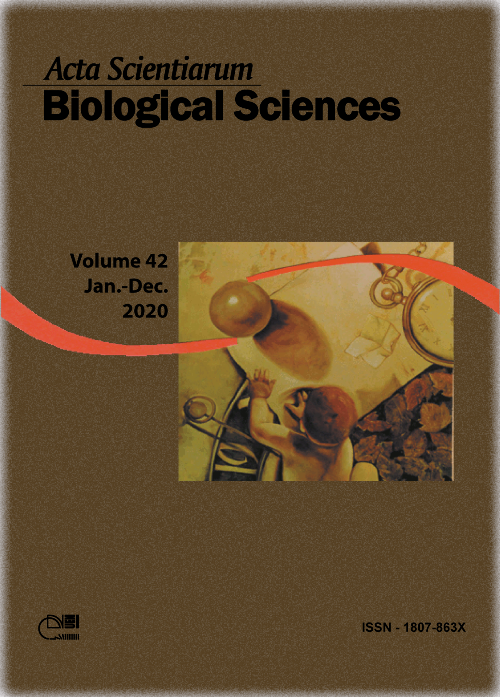Influence of environment on the leaf morpho-anatomy and histochemical of the ayahuasca leaf: Populations cultivated in extra-Amazonian regions
Resumo
Psychotria viridis Ruiz & Pav. (Rubiaceae) occurs naturally throughout the Amazon and it is traditionally used by indigenous communities, being incorporated into religious use in urban contexts over the last few decades. It is known and cultivated in many regions of South America for possessing valuable bioactive alkaloids. In this paper, we described P. viridis leaf morphology, anatomy and histochemistry from three populations cultivated in the southeastern Brazil, in order to identify possible adaptations to local environment and management. All plants presented terminal stipules and basic morpho-anatomical patterns of leaves, consistent with most species of the genus, as heterogeneous dorsiventral mesophyll, uniseriate epidermis, presents large cells with prominent vacuoles and druses. Unicellular non-glandular trichomes and multicellular starry trichomes were present in the primary and secondary veins. Amphi-hypostomatic leaf pattern, not yet described for the species, was common in all studied plants. Variation in the presence of domatia in the same population indicates that this structure cannot be used for taxonomic determination of P. viridis, as already described for other species of the genus. Presence of secretory ducts and reduction in stomata density and leaf area represent the main morpho-anatomic adaptations of plants from drier and warmer climates. Histochemical tests were positive for alkaloids, polysaccharides, proteins and phenolic compounds, being negative for starch only in plants subjected to water stress. We concluded that the morpho-anatomical and histochemical alterations found in the plants of this study resulted from seasonal water deficit adaptations and to maintain or attract mutualistic organisms.
Downloads
DECLARAÇÃO DE ORIGINALIDADE E DIREITOS AUTORAIS
Declaro que o presente artigo é original, não tendo sido submetido à publicação em qualquer outro periódico nacional ou internacional, quer seja em parte ou em sua totalidade.
Os direitos autorais pertencem exclusivamente aos autores. Os direitos de licenciamento utilizados pelo periódico é a licença Creative Commons Attribution 4.0 (CC BY 4.0): são permitidos o compartilhamento (cópia e distribuição do material em qualqer meio ou formato) e adaptação (remix, transformação e criação de material a partir do conteúdo assim licenciado para quaisquer fins, inclusive comerciais.
Recomenda-se a leitura desse link para maiores informações sobre o tema: fornecimento de créditos e referências de forma correta, entre outros detalhes cruciais para uso adequado do material licenciado.












1.png)




3.png)













